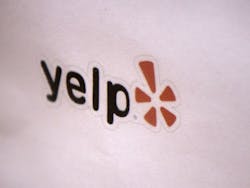The Health Datapalooza conference in Washington, D.C., this week featured a panel discussion with an executive from Yelp, which is best known for its consumer ratings of restaurants and bars, as well as an official from a health system that has taken the Yelp approach by publishing online all quality ratings and patient comments about providers. Is this a viable path to quality improvement?
Jeremy Stoppelman, Yelp’s CEO and former vice president of engineering for PayPal, said searching for a doctor when he was sick in 2004 actually helped him develop ideas for Yelp, he said. “I pulled up Google and looked for a doctor. I was shocked at how little information was available.” He wanted to know what other people thought of physicians, not just which university their degree was from. I thought, why couldn’t you search the community’s knowledge? That was a starting point for the Yelp site.” It recently crossed the threshold of 100 million reviews. And although it is better known for restaurant reviews, it does offer reviews of hospitals and clinicians. Over time, it has gathered a wealth of reviews on providers and hospitals. Now it is working to connect that review data with data from government sources and cleaned up to augment its listings. That could include emergency room wait times and information on dialysis clinics and nursing homes. “There are other helpful sources of data that consumers can’t easily get access to.”
On the same panel moderated by Charles Ornstein, senior reporter for ProPublica, was Vivian Lee, Ph.D., M.D., M.B.A., senior vice president for health sciences and dean of the School of Medicine of University of Utah and CEO of University of Utah Health Care in Salt Lake City.
Lee described how in 2012, the University of Utah became the first health system to post patient satisfaction ratings and full reviews online. The reviews detailed how patients rated physicians on things like communications, shared decision making and wait times. Lee said the results have been impressive. In the last three years, half of its physicians have rated in the top 10 percent in terms of patient satisfaction nationally, and 25 percent were in the top 1 percent. “This is without any financial inducement,” she said.
Lee said this is part of a larger effort in how University of Utah uses data and transparency to engage providers and push transformation forward. “We are tapping into the intrinsic motivation of physicians. They are fundamentally driven to outperform, to be the top in their class,” she said. The university gave providers their own data and national benchmark data and gave them the autonomy to work to improve scores. They did things like working to make the EHR less distracting or went through training on communications. “The best thing is that we created a patient-centered culture motivated by this intrinsic drive. It hasn’t been top down. We have engaged patients, listened to patients. They are our partners in transformation.” She said several other health systems are now emulating this approach.
Ornstein asked how the University of Utah handled doctors who get poor reviews. “We think of it as a learning experience rather than a gotcha,” Lee said. “Physicians are sensitive to it. We do work with them closely. We talk about communication and the team. It can be about the staff or other factors outside their control.” She added that new physicians now come in having grown up familiar with Yelp. “They come in expecting to look up physicians and expect to be reviewed themselves. It creates a culture where the next generation of physicians is expecting this.”


